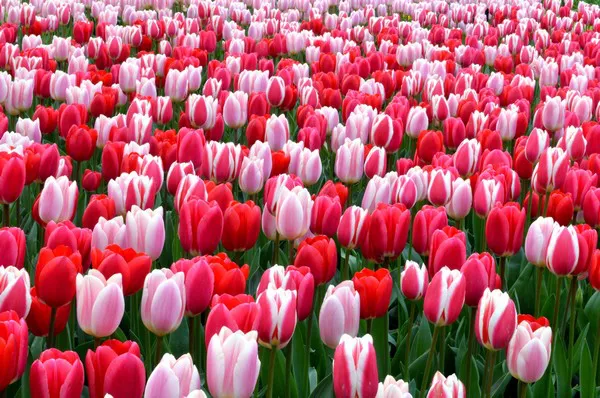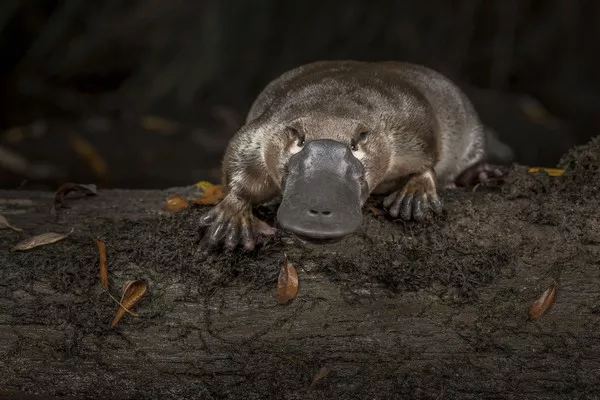Spring heralds the arrival of new life, vibrant colors, and fragrant blooms, transforming landscapes into kaleidoscopes of beauty and vitality. From dainty daffodils to majestic magnolias, the season brings forth an array of flowers that captivate the senses and uplift the spirit. In this comprehensive guide, we explore the 20 most common spring flowers, highlighting their characteristics, care requirements, and symbolic significance to help you embrace the beauty of the season.
20 Most Common Spring Flowers
1. Tulip (Tulipa spp.)
Tulips are synonymous with spring, known for their bold, cup-shaped flowers and vibrant colors. Originating from Central Asia, tulips come in a wide range of hues, including red, yellow, pink, purple, and white, making them versatile choices for gardens, borders, and floral arrangements. Tulips prefer well-drained soil and full sun to partial shade, requiring regular watering and fertilization to thrive. With their graceful blooms and elegant stems, tulips add elegance and charm to any spring landscape.
2. Daffodil (Narcissus spp.)
Daffodils, also known as narcissus, are cherished for their cheerful, trumpet-shaped flowers and vibrant yellow hues. Native to Europe and North Africa, daffodils are early bloomers, heralding the arrival of spring with their bright and sunny disposition. These flowers prefer well-drained soil and full sun to partial shade, requiring minimal maintenance to thrive. Daffodils are commonly used in borders, rock gardens, and naturalized settings, adding a pop of color and charm to the spring landscape.
3. Hyacinth (Hyacinthus spp.)
Hyacinths are prized for their fragrant, bell-shaped flowers and intense colors, making them popular choices for spring gardens and floral arrangements. Native to the Mediterranean region and parts of Asia, hyacinths come in a variety of hues, including blue, pink, purple, white, and yellow, with each color carrying its own symbolic significance. Hyacinths prefer well-drained soil and full sun to partial shade, requiring regular watering and fertilization to promote healthy growth and flowering. With their intoxicating scent and vibrant blooms, hyacinths add beauty and fragrance to any spring garden.
4. Crocus (Crocus spp.)
Crocuses are early bloomers known for their delicate, cup-shaped flowers and vibrant colors, heralding the arrival of spring with their cheerful presence. Native to Europe, North Africa, and parts of Asia, crocuses come in a variety of hues, including purple, yellow, white, and striped varieties. These flowers prefer well-drained soil and full sun to partial shade, requiring minimal maintenance to thrive. Crocuses are commonly used in rock gardens, borders, and naturalized settings, adding a splash of color to the spring landscape.
5. Lilac (Syringa spp.)
Lilacs are beloved for their fragrant, cone-shaped flowers and graceful, arching branches, making them iconic symbols of spring. Native to Europe and Asia, lilacs come in a variety of colors, including shades of purple, pink, blue, and white, with each color carrying its own symbolic significance. Lilacs prefer well-drained soil and full sun to partial shade, requiring minimal pruning and maintenance to thrive. With their intoxicating scent and elegant blooms, lilacs are prized additions to spring gardens and floral arrangements.
6. Forsythia (Forsythia spp.)
Forsythias are heralds of spring, known for their profusion of bright yellow flowers that adorn their arching branches, signaling the end of winter and the arrival of warmer weather. Native to Asia and parts of Europe, forsythias are hardy shrubs that thrive in a variety of soil types and light conditions, making them versatile choices for spring landscapes. With their early flowering period and vigorous growth habit, forsythias are commonly used as hedge plants, border shrubs, and focal points in the spring garden.
7. Cherry Blossom (Prunus spp.)
Cherry blossoms, also known as sakura, are revered for their ethereal beauty and cultural significance, symbolizing renewal, beauty, and the transient nature of life. Native to East Asia, cherry blossoms come in a variety of colors, including shades of pink, white, and red, with each color carrying its own symbolic meaning. Cherry blossoms prefer well-drained soil and full sun to partial shade, requiring minimal maintenance to thrive. With their delicate petals and fleeting beauty, cherry blossoms are celebrated in festivals and events around the world, marking the arrival of spring with their breathtaking displays.
8. Magnolia (Magnolia spp.)
Magnolias are renowned for their large, showy flowers and graceful, evergreen foliage, making them iconic symbols of spring and Southern charm. Native to Asia, the Americas, and parts of Africa, magnolias come in a variety of forms, including saucer-shaped, star-shaped, and tulip-shaped flowers, with hues ranging from white and pink to purple and yellow. Magnolias prefer well-drained soil and full sun to partial shade, requiring minimal pruning and maintenance to thrive. With their timeless beauty and elegant blooms, magnolias add a touch of sophistication to any spring landscape.
9. Azalea (Rhododendron spp.)
Azaleas are cherished for their vibrant, trumpet-shaped flowers and glossy, evergreen foliage, making them popular choices for spring gardens and landscapes. Native to Asia, Europe, and North America, azaleas come in a variety of colors, including shades of pink, red, purple, white, and orange, with each color carrying its own symbolic significance. Azaleas prefer acidic, well-drained soil and partial shade, requiring regular watering and fertilization to promote healthy growth and flowering. With their striking blooms and lush foliage, azaleas add beauty and charm to any spring garden.
10. Peony (Paeonia spp.)
Peonies are revered for their large, fragrant flowers and lush, glossy foliage, making them prized additions to spring gardens and floral arrangements. Native to Asia, Europe, and North America, peonies come in a variety of forms, including single, semi-double, and double blooms, with hues ranging from white and pink to red and yellow. Peonies prefer well-drained soil and full sun to partial shade, requiring minimal maintenance to thrive. With their exquisite beauty and long flowering period, peonies are cherished for their elegance and charm.
11. Hellebore (Helleborus spp.)
Hellebores, also known as Lenten roses, are treasured for their early blooming flowers and rich, dark foliage, making them valuable additions to spring gardens and woodland landscapes. Native to Europe and Asia, hellebores come in a variety of colors, including shades of white, pink, purple, and green, with each color carrying its own unique allure. Hellebores prefer well-drained soil and partial shade, requiring minimal maintenance to thrive. With their resilience and elegance, hellebores add beauty and sophistication to any spring landscape.
12. Lily of the Valley (Convallaria majalis)
Lilies of the valley are cherished for their delicate, bell-shaped flowers and sweet, intoxicating fragrance, making them popular choices for spring gardens and bridal bouquets. Native to Europe, Asia, and North America, lilies of the valley thrive in moist, well-drained soil and partial to full shade, requiring minimal maintenance to thrive. With their graceful blooms and timeless appeal, lilies of the valley add elegance and charm to any spring landscape.
13. Bleeding Heart (Dicentra spectabilis)
Bleeding hearts are prized for their heart-shaped flowers and graceful, arching stems, making them beloved additions to spring gardens and shaded landscapes. Native to Asia and North America, bleeding hearts come in a variety of colors, including shades of pink, white, and red, with each color carrying its own symbolic significance. Bleeding hearts prefer moist, well-drained soil and partial to full shade, requiring minimal maintenance to thrive. With their romantic blooms and elegant foliage, bleeding hearts add beauty and charm to any spring garden.
14. Fritillaria (Fritillaria spp.)
Fritillarias are admired for their unique, bell-shaped flowers and striking, checkered patterns, making them prized additions to spring gardens and alpine landscapes. Native to Europe, Asia, and North America, fritillarias come in a variety of forms, including nodding, upright, and pendant blooms, with hues ranging from deep purples and blues to soft yellows and whites. Fritillarias prefer well-drained soil and full sun to partial shade, requiring minimal maintenance to thrive. With their exotic appearance and captivating blooms, fritillarias add drama and allure to any spring landscape.
15. Primrose (Primula spp.)
Primroses are beloved for their cheerful, dainty flowers and vibrant colors, making them popular choices for spring gardens and container displays. Native to Europe, Asia, and North America, primroses come in a variety of forms, including single, double, and ruffled blooms, with hues ranging from bright yellows and pinks to soft blues and purples. Primroses prefer moist, well-drained soil and partial shade, requiring regular watering and fertilization to promote healthy growth and flowering. With their early blooming period and vibrant blooms, primroses add color and charm to any spring landscape.
16. Carnation (Dianthus spp.)
Carnations are cherished for their frilly, fragrant flowers and long-lasting blooms, making them popular choices for spring gardens and floral arrangements. Native to Europe and Asia, carnations come in a variety of colors, including shades of pink, red, white, and yellow, with each color carrying its own symbolic significance. Carnations prefer well-drained soil and full sun to partial shade, requiring regular watering and fertilization to promote healthy growth and flowering. With their timeless beauty and classic appeal, carnations add elegance and charm to any spring landscape.
17. Anemone (Anemone spp.)
Anemones are admired for their delicate, poppy-like flowers and graceful, wiry stems, making them prized additions to spring gardens and woodland landscapes. Native to Europe, Asia, and North America, anemones come in a variety of forms, including single, semi-double, and double blooms, with hues ranging from soft pinks and purples to bold blues and whites. Anemones prefer well-drained soil and partial shade, requiring minimal maintenance to thrive. With their ethereal beauty and whimsical blooms, anemones add enchantment and allure to any spring landscape.
18. Virginia Bluebell (Mertensia virginica)
Virginia bluebells are cherished for their clusters of delicate, bell-shaped flowers and graceful, arching stems, making them valued additions to spring gardens and woodland landscapes. Native to North America, Virginia bluebells come in shades of soft blue, pink, and white, with each color adding a touch of ethereal beauty to the landscape. Virginia bluebells prefer moist, well-drained soil and partial shade, requiring minimal maintenance to thrive. With their ephemeral blooms and graceful presence, Virginia bluebells add charm and elegance to any spring garden.
19. Columbine (Aquilegia spp.)
Columbines are admired for their unique, spurred flowers and graceful, airy foliage, making them prized additions to spring gardens and cottage landscapes. Native to Europe, Asia, and North America, columbines come in a variety of colors, including shades of blue, pink, purple, red, white, and yellow, with each color adding its own unique allure to the landscape. Columbines prefer moist, well-drained soil and partial shade, requiring minimal maintenance to thrive. With their whimsical blooms and romantic appeal, columbines add beauty and charm to any spring garden.
20. Iris (Iris spp.)
Irises are renowned for their exquisite, iris-like flowers and elegant, sword-shaped foliage, making them iconic symbols of spring and perennial gardens. Native to Europe, Asia, and North America, irises come in a variety of forms, including bearded, beardless, and crested blooms, with hues ranging from deep purples and blues to soft pinks and whites. Irises prefer well-drained soil and full sun to partial shade, requiring minimal maintenance to thrive. With their timeless beauty and graceful blooms, irises add sophistication and allure to any spring landscape.
See Also: 6 Most Common Hanging Plants
Conclusion:
In conclusion, spring brings forth a bounty of blooms that captivate the senses and uplift the spirit, transforming landscapes into vibrant tapestries of color and fragrance. Whether you prefer the bold and vibrant tulips, the delicate and fragrant hyacinths, or the ethereal beauty of cherry blossoms, there is a spring flower to suit every taste and preference. By understanding the characteristics, care requirements, and symbolic significance of common spring flowers, you can create stunning floral displays that celebrate the beauty and abundance of the season. With their grace, elegance, and timeless appeal, spring flowers enrich our lives and remind us of the beauty and resilience of nature.
You Might Be Interested In:










![10 Most Richest Cities in the United States [Revealed!]](https://www.validdownloads.com/wp-content/uploads/2023/12/Manjula-Pothos.webp)














